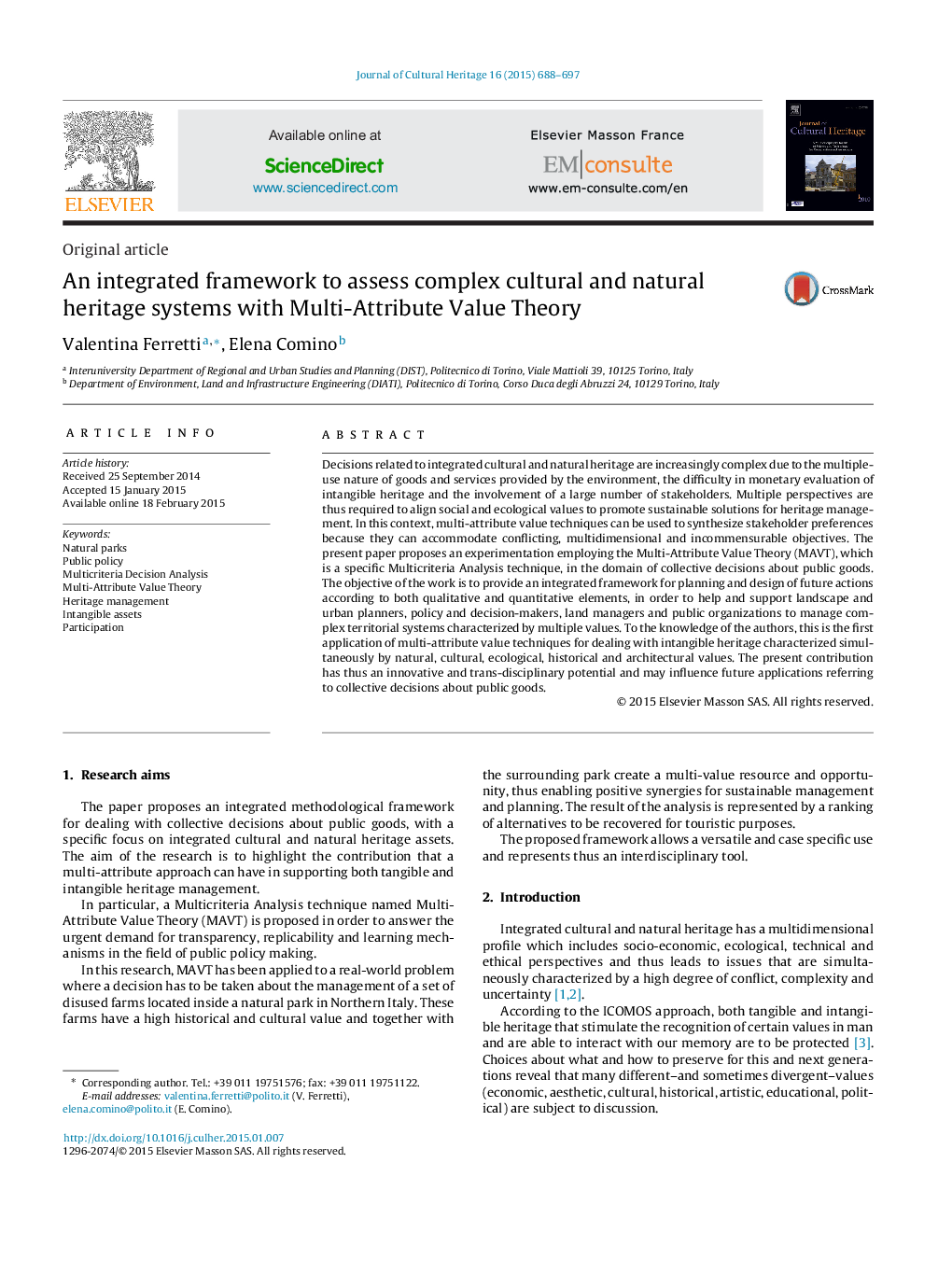| Article ID | Journal | Published Year | Pages | File Type |
|---|---|---|---|---|
| 1037923 | Journal of Cultural Heritage | 2015 | 10 Pages |
Decisions related to integrated cultural and natural heritage are increasingly complex due to the multiple-use nature of goods and services provided by the environment, the difficulty in monetary evaluation of intangible heritage and the involvement of a large number of stakeholders. Multiple perspectives are thus required to align social and ecological values to promote sustainable solutions for heritage management. In this context, multi-attribute value techniques can be used to synthesize stakeholder preferences because they can accommodate conflicting, multidimensional and incommensurable objectives. The present paper proposes an experimentation employing the Multi-Attribute Value Theory (MAVT), which is a specific Multicriteria Analysis technique, in the domain of collective decisions about public goods. The objective of the work is to provide an integrated framework for planning and design of future actions according to both qualitative and quantitative elements, in order to help and support landscape and urban planners, policy and decision-makers, land managers and public organizations to manage complex territorial systems characterized by multiple values. To the knowledge of the authors, this is the first application of multi-attribute value techniques for dealing with intangible heritage characterized simultaneously by natural, cultural, ecological, historical and architectural values. The present contribution has thus an innovative and trans-disciplinary potential and may influence future applications referring to collective decisions about public goods.
